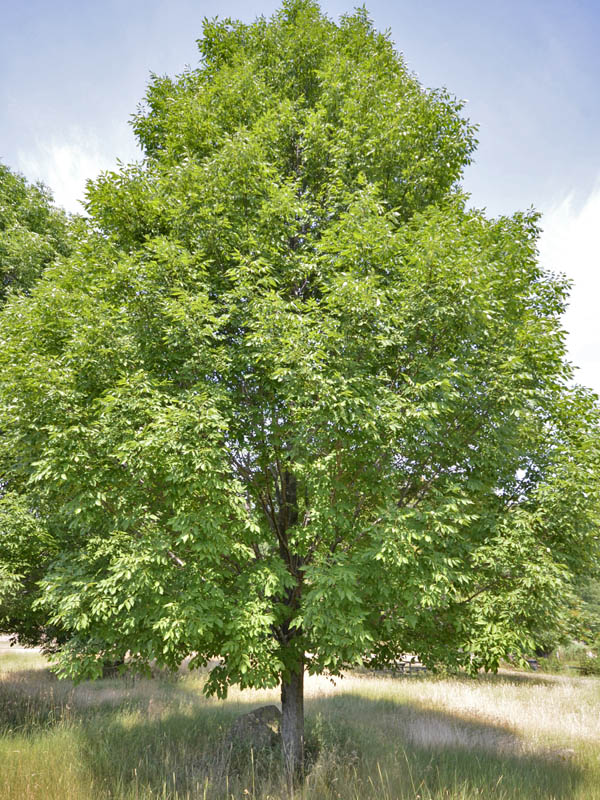
Woody > Fraxinus > Fraxinus americana > Fraxinus americana
Fraxinus americana
White Ash
Origin: Introduced into cultivation in 1724. Nova Scotia to Minnesota, south to Florida and Texas and Mexico. Population decline due to Emerald Ash Borer has placed this species on the 'Red List' as critically endangered (Criteria A3e+4ae).
| Family |
| Oleaceae |
| Genus |
| Fraxinus |
| Species |
| americana |
| Category |
| Woody |
| Type |
| Tree (deciduous) |
| Pronunciation |
| USDA Hardiness Zone |
| 3 - 9 |
| Canadian Hardiness Zone |
| 3 |
| RHS Hardiness Zone |
| H7 |
| Height |
| 25 m+ |
| Spread |
| 10 m |
Photographs
Description and Growing Information
Flowering Period
| General Description |
| An elegant woodland tree known for its evenly fissured greyish-white bark. Its tough, elastic wood is used for manufacturing Louisville Slugger baseball bats and other sporting goods. |
| Landscape |
| Used in parks and other large areas. |
| Cultivation |
| Moist, well drained soil in full sun. Is slightly drought tolerant, best if protected from strong winds. |
| Shape |
| Upright, oval. |
| Growth |
| Medium |
| ID Characteristic |
| Opposite, pinnately compound leaves, female plants have paddle-shaped fruit. The bark has a diamond-shaped ridge pattern. |
| Pests |
| Possible problems include: leaf spot, rust, cankers, carpenter worm, lilac borer, fall webworm, ash flower gall and brown-headed ash sawfly. Emerald Ash Borer is a major problem in its range and has caused the species to be 'Red Listed'. May be susceptible to ash dieback (Charlara fraxinea). |
| Bark/Stem Description |
| Ash grey to grey-brown. |
| Flower/Leaf Bud Description |
| A terminal bud with 2-3 pairs pairs of scales, semi-spherical to broadly ovate and rusty to dark brown in colour. |
| Leaf Description |
| Pinnately compound, opposite leaves 20-60 cm long. Rounded or tapered at the base, usually entire or serrate near the apex. Dark green and glabrous above and glaucous beneath. |
| Flower Description |
| Dioecious, usually unisexual, apetalous, calyx minute, corolla absent, green to purple in colour. |
| Fruit Description |
| Samara, 2.5-5 cm long and is of no ornamental quality; its shape resembles a canoe paddle. |
| Colour Description |
| Leaves are dark green above and paler beneath in summer changing to yellow to deep purple in autumn. Quite spectacular in autumn colour. |
| Texture Description |
| Medium in leaf, medium-coarse in winter. |
| Notable Specimens |
| The Royal Botanical Gardens, Burlington, Ontario, Canada. |
| Propagation |
| Seeds germinate best with warm stratification at 20-30°C for 30 days followed by cold at 5°C for 60 days. Stored seed remains viable for about 2-3 years in seed banks. |
